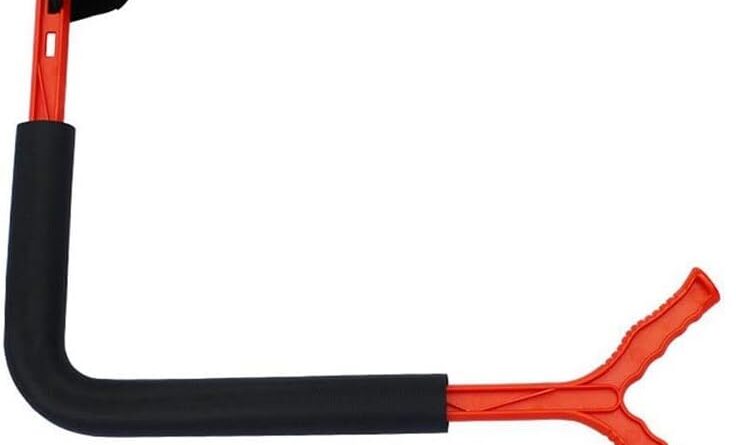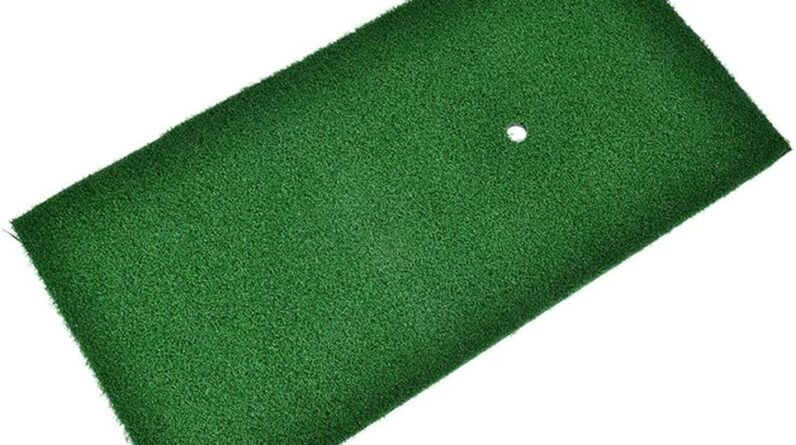Looking to improve your golf game? Look no further! In this article, we’ve got you covered with some helpful tips that will take your golf skills to the next level. Whether you’re a beginner or a seasoned player, these tips will provide you with the guidance and techniques you need to enhance your swing, accuracy, and overall performance on the golf course. Say goodbye to those frustrating missed shots and hello to a more enjoyable and successful golfing experience. So grab your clubs and get ready to see a significant improvement in your game!
Choosing the Right Golf Clubs
When it comes to choosing the right golf clubs, there are several factors to consider. First and foremost, you need to assess your skill level and goals. Are you a beginner looking to improve your game, or are you an experienced player looking for clubs that can take your game to the next level? Understanding your skill level and goals will help you determine the type of clubs that are best suited for you.
Once you have a clear understanding of your skill level and goals, it’s important to get fitted for clubs. Getting fitted involves visiting a professional club fitter who will analyze your swing and body measurements to determine the ideal specifications for your clubs. This ensures that the clubs are the correct length, lie angle, and flex for your swing, maximizing your performance on the course.
Investing in quality clubs is also crucial for improving your game. While it may be tempting to opt for cheaper clubs, investing in high-quality equipment can make a significant difference in your performance. Quality clubs are often made with superior materials and craftsmanship, providing better feel and control. They are also more durable and will last longer, saving you money in the long run.
To make an informed decision when choosing golf clubs, it’s important to understand the different types of clubs available. The main types of clubs include drivers, woods, hybrids, irons, wedges, and putters. Each club is designed for a specific purpose and has its own unique characteristics. By understanding the different types of clubs and their uses, you can select the ones that align with your playing style and help you achieve your goals on the course.
Perfecting Your Swing
A good swing is essential for success in golf. To perfect your swing, you need to focus on several key elements.
First and foremost, pay attention to your grip. The grip is the foundation of your swing and plays a crucial role in your ability to control the clubface and generate power. Make sure your grip is neither too tight nor too loose, and position your hands correctly on the club.
Next, work on your stance and posture. A proper stance provides a stable base and allows your body to move effectively during the swing. Maintain a balanced and athletic posture, with your weight evenly distributed between your feet.
Practice your backswing and follow-through to ensure a smooth and efficient swing. The backswing sets the stage for a powerful downswing, so focus on turning your shoulders and shifting your weight properly. In the follow-through, allow your body to rotate fully and maintain balance.
Finally, use proper body mechanics throughout your swing. Engage your core muscles and use your lower body to initiate the downswing. This will help you generate power and maintain control over the clubhead.

This image is property of gray-wdbj-prod.cdn.arcpublishing.com.
Improving Your Putting
A strong putting game is crucial for scoring well in golf. To improve your putting, it’s important to master the basics.
Start by focusing on your setup and alignment. Position yourself behind the ball and take a few practice strokes to gauge the speed and line. Align the putter face square to the target line and position your body parallel to it.
Developing a consistent putting routine can help improve your consistency and confidence on the greens. Your routine should include taking a few practice strokes, visualizing the line and speed, and stepping into your address position with confidence.
Reading the greens is another important aspect of putting. Pay attention to the slope and grain of the green, as these factors can significantly affect the break of the putt. Take your time to read the green from different angles and make an informed decision on the line and speed.
Practicing your speed and distance control is also crucial for becoming a better putter. Set up a practice drill where you putt to targets of varying distances, focusing on getting the ball to stop at the desired spot. This will help you develop a better feel for the speed of the greens and improve your distance control.
Enhancing Your Short Game
The short game is often referred to as the “scoring zone” in golf, as it encompasses shots from around the green. Mastering chipping and pitching techniques is essential for improving your short game performance.
Chipping involves hitting short, low-flying shots that roll out toward the hole. Focus on maintaining a stable and balanced stance, with the majority of your weight on your front foot. Use a lofted club, such as a pitching wedge or sand wedge, and make a controlled, pendulum-like swing.
Pitching, on the other hand, involves hitting higher shots with more loft and spin. Position the ball slightly forward in your stance and use a more open clubface. Take a longer, more fluid swing, allowing the club to glide under the ball and create sufficient loft.
Bunker shots can be challenging, but with practice, you can become proficient at escaping sand traps. Aim to strike the sand approximately two inches behind the ball and follow through with a full swing. Remember to open the clubface to increase loft and allow the club to glide through the sand.
Flop shots are high, soft shots typically used when you need to clear an obstacle near the green. Position the ball forward in your stance and open the clubface significantly. Make a full, steep swing and accelerate through impact to generate the necessary height and spin.
Developing your approach shots is also crucial for enhancing your short game. Approach shots are the shots played from the fairway or rough to the green. Focus on accuracy and distance control, selecting the appropriate club for the distance and considering the green’s layout and hazards.

This image is property of gray-wdbj-prod.cdn.arcpublishing.com.
Developing a Practice Routine
To improve your golf game, it’s essential to develop a structured and effective practice routine. Here are some tips to help you create a practice routine that maximizes your progress:
-
Set specific goals for each practice session. Whether it’s improving your driving accuracy or working on your short game, having clear objectives helps you stay focused and motivated.
-
Include a variety of drills and exercises in your practice routine. Mixing up the types of shots and challenges you face on the practice range will help you develop a well-rounded game.
-
Allocate time for practicing different aspects of the game. Devote specific time to working on your swing mechanics, short game, and putting. This ensures that you’re addressing all areas of your game and not neglecting any one aspect.
-
Track your progress. Keep a journal or use a golf app to record your practice sessions and track your performance over time. This can help you identify areas of improvement and measure your progress.
By following a structured practice routine, you’ll be able to make consistent improvements in your golf game and reach your goals more effectively.
Understanding Course Management
Course management refers to the strategic decisions and tactics you employ while playing a round of golf. By understanding the course layout and hazards, making smart shot selections, managing your emotions, and strategizing for different hole types, you can optimize your performance on the course.
Start by studying the course layout and hazards before your round. Take note of the distances, slopes, and angles of fairways and greens. Identify the locations of bunkers, water hazards, and out-of-bounds areas. This knowledge will help you plan your shots and avoid trouble areas.
When making shot selections, it’s important to consider the risks and rewards of each option. Assess your abilities, the conditions, and your overall strategy for the round. Sometimes, playing it safe and aiming for the center of the fairway or green is the best choice, while other times, taking a calculated risk for a potential birdie opportunity may be worth it.
Managing your emotions on the course is crucial for maintaining focus and making sound decisions. Stay calm and composed, even after a bad shot or a challenging hole. Accept that mistakes happen and focus on your next shot. Emotions can cloud your judgment and lead to poor decision-making, so it’s important to stay level-headed.
Strategize for different hole types, such as par 3s, par 4s, and par 5s. Each hole requires a different approach and understanding the optimal strategy for each type of hole will help you make better decisions. For example, on a long par 5, you may choose to lay up with a shorter club off the tee to set up a more manageable approach shot.
By applying effective course management strategies, you’ll be able to navigate the course more efficiently, minimize mistakes, and ultimately improve your scores.

This image is property of gray-wdbj-prod.cdn.arcpublishing.com.
Improving Mental Focus and Concentration
Mental focus and concentration are crucial aspects of golf that can greatly impact your performance. To enhance your mental game, consider the following tips:
Practice mindfulness and relaxation techniques to maintain a calm and focused mindset on the course. Deep breathing exercises, visualization, and meditation can help you stay present and alleviate any anxiety or tension.
Visualization is a powerful tool that can help you visualize successful shots before executing them. Take the time to vividly imagine the ball flight, the target, and the desired outcome. This mental imagery can enhance your confidence and reinforce positive swing patterns.
Develop a pre-shot routine that helps you establish a rhythm and focus before each shot. This routine may involve taking a few practice swings, visualizing the shot, and stepping into your address position with confidence. A consistent pre-shot routine can help you get into the right mindset and prepare for a successful shot.
Stay present and focused during the game. Avoid thinking about past mistakes or future outcomes. Instead, focus on the process and the shot at hand. This level of mindfulness can help you make better decisions and execute shots with greater precision.
By improving your mental focus and concentration, you’ll be able to better handle pressure situations, maintain a confident mindset, and perform at your best on the golf course.
Staying Fit and Flexible
Physical fitness and flexibility are essential for playing golf at a high level. Here are some tips to help you stay fit and flexible for the game:
Incorporate strength training into your fitness routine. Focus on exercises that target the muscles used in the golf swing, such as the core, legs, and upper body. This will help you develop stability and power in your swing.
Improve your flexibility with stretching exercises. Stretching before and after your round can help you maintain a full range of motion and reduce the risk of injury. Focus on stretches that target the hips, shoulders, and back, as these areas are crucial for a fluid golf swing.
Engage in cardiovascular workouts to improve your endurance and overall fitness. Activities such as walking, running, swimming, or cycling can help increase your cardiovascular health, allowing you to play a full round of golf without fatigue.
Take care of your body with proper nutrition and hydration. Fueling your body with nutritious foods and staying hydrated throughout your round will help maintain your energy levels and improve your overall performance.
By staying fit and flexible, you’ll be able to generate more power in your swing, maintain better balance, and prevent injuries. This will ultimately lead to improved performance on the golf course.

This image is property of gray-wdbj-prod.cdn.arcpublishing.com.
Utilizing Technology and Training Aids
Technology and training aids can be valuable tools for improving your golf game. Here are some ways you can utilize them:
Use golf swing analysis apps to track and analyze your swing. These apps can provide valuable feedback on your swing path, clubhead speed, and other important metrics. By examining this data, you can identify areas for improvement and make adjustments to your technique.
Try training aids that target specific aspects of your game. Whether it’s a putting alignment tool, a swing plane trainer, or a weighted club, training aids can help you develop proper mechanics and reinforce good habits.
Film and review your swings. Set up a camera or use a smartphone to record your swings during practice sessions. Reviewing the footage allows you to analyze your technique, identify flaws, and make adjustments.
Consider taking professional lessons. A qualified golf instructor can provide personalized guidance and instruction tailored to your specific needs and goals. They can help you identify areas for improvement, provide feedback, and offer drills and exercises to help you practice more effectively.
By utilizing technology and training aids, you can accelerate your learning and improvement process. These tools can provide valuable insights and feedback, helping you make the necessary adjustments to your technique and take your game to the next level.
Playing with Confidence
Playing with confidence is essential for success in golf. Here are some strategies to help boost your confidence on the course:
Believe in your abilities. Trust that you have the skills and techniques necessary to play well. Remind yourself of your past successes and focus on your strengths.
Learn from mistakes and setbacks. Instead of dwelling on a bad shot or a poor round, use it as an opportunity to learn and grow. Embrace a growth mindset and view challenges as stepping stones to improvement.
Practice positive self-talk. Replace negative thoughts and doubts with positive affirmations. Remind yourself of your capabilities and visualize success.
Stay focused on the process, not just the outcome. Rather than obsessing over your score or the end result, focus on executing each shot to the best of your abilities. Emphasize the process of playing, rather than the end result.
By playing with confidence, you’ll be able to perform at your best and overcome any challenges or obstacles that come your way on the golf course.
In conclusion, improving your golf game requires a combination of skill, practice, and mental focus. By choosing the right golf clubs, perfecting your swing, enhancing your short game, developing a practice routine, understanding course management, improving mental focus, staying fit and flexible, utilizing technology and training aids, and playing with confidence, you can make significant progress in your golf performance. Remember, golf is a journey, and with dedication and persistence, you can continue to improve and enjoy the game for years to come.

This image is property of gray-wdbj-prod.cdn.arcpublishing.com.






